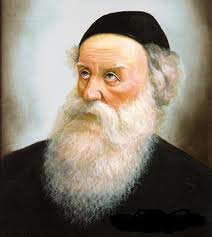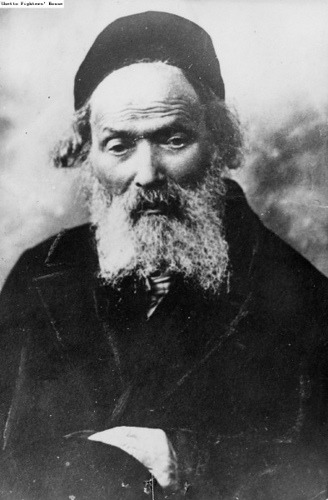"Sodomite Rabbis": The History Behind the Conservative Movement’s Acceptance of Openly Homosexual Rabbis

This is a long but well researched article from The Jewish Voice and Opinion May 2007 edition written by Catriel Sugarman documenting the decline of the Conservative movement from a "modernized" halachic structure to a post-halachic model of convenience driven, finger in the wind cult.
This article outlines in a systematic approach the route of Conservatism from Torah Judaism (which it never really was based upon Solomon Schechter's statement quoted in the article):
"it is not a mere coincidence that the first representatives of the historical school were also the first Jewish scholars who proved themselves more or less ready to join the modern school of Biblical Criticism, and even to contribute their share to it…Tradition becomes thus the means whereby the modern divine compensates himself for the loss of the Bible …"
to today's non-halachic Jewish cult. The article continues quoting Schechter:
"The center of authority is actually removed from the Bible and placed in some living body ... the collective conscience of Catholic Israel and embodied in the Universal Synagogue," he wrote, meaning that decisions on Jewish Law are to be determined largely by the practices of klal Yisrael, the whole of the (observant) Jewish community.
"It is neither Scripture nor primitive Judaism [sic], but general custom which forms the real rule of practice," he wrote.
Catriel Sugarman comments on this point (analyzing a statement by Neil Gilman):
This represented a radical break from the traditional methods of understanding, studying, and interpreting Torah. Once the Conservative movement took this decisive step and replaced Revelation with the proclivities of "Catholic Israel," halachic authority perforce diminished and, once denuded of Divine sanction, began to wither away.
The writer has pointed out the distinction between what is called "orthodox" better, Torah Judaism and the non-traditional cults. This very same phenomenon described by the writer arises every time where man-made fantasy social structures in history wind their way into the backrooms of an elite few who steer the masses under their charge in a direction they so desire.
It doesn't matter if it is religious or not, the same being true with politics. The core of Judaic belief in One G-d, the Creator, the Father, the Judge, in large part restricts the fall into absurdity. The Rabbinic system has prevailed and endured as possibly the oldest structured system of leadership in the world. The non-traditional movements have benefited from this ordered process of halachic application and in the same breath criticize it's very existence. However, in discussing Conservatism, we will see the writer explains that the common path of autocracy gave way to religio-populism. It is interesting to note that populism in the political sphere is reviled by the heavily democrat voting "Conservative" membership.
Take for instance the following observation by the writer:
On the contrary, by abandoning inconvenient halachic principles and by not emphasizing personal observance, the Conservative movement made itself the address for hundreds of thousands of upwardly mobile, religiously apathetic Eastern European immigrants and their children who wanted to "Americanize" their Judaism, and for whom Classical Reform was not an option.
The very definition of what we would today call "focus group" politics led Conservatism in the direction in which today openly homosexual Rabbis are a reality. Where did it start?
"Americanize{d}" their Judaism seems to jump out. Now there is nothing wrong with "Americanizing" when it comes to liberty, the ability to live your dreams, the political culture, free assembly, etc.
Judaism (except where in common with all religion as it relates to the right to worship as one sees fit) is not subject to Americanism. This point was made clearly by the
previous Lubavitcher Rebbe who proclaimed upon his arrival to the "golden medina" in 1940, "America is no different", meaning that Torah is as real in the USA as it was in the old world. It seems the leaders of Conservatism in America in the 1920's didn't consult with the Lubavitcher Rebbe.
Another example of
abandoning inconvenient halachic principles and focus group based religion is found in the words of a 1958 "United Synagogue Review" quoted by Sugarman:
The pro-Conservative propaganda in the targeted synagogues centered so exclusively on the issue of "mixed seating" that Dr. Bernard Segal, executive director of the United Synagogue of America, complained in the "United Synagogue Review" (1958) that "we have introduced family pews, organ music, English readings. Our cantors have turned around to face the congregations … All of these were never intended to be ends in themselves or principles of the Conservative movement … Unfortunately, in the minds of too many, these expedients have come to represent the sum and substance of the Conservative movement."
As far back as 1958, Segal is admitting, Conservatism was defined not by religious principles but how it was differentiated from traditional Jewish practice and law.
Much of the remainder of the article discusses the "Driving Teshuva" (the permission to drive to the synagogue which was interpreted as carte blanche permission to drive anywhere and do anything), more on Mechitza, egalitarianism, and female ordination, intellectual honesty, political correctness and hardball politics played by the leadership of the movement vis a vis the Talmud faculty of JTS.
The article reads as a recipe book for de-construction of Torah Judaism. Step by Step, Conservatism undermined the yesodos of Torah until it created a new entity, a non-halachic, and non-Torah based religion.
Finally, we wind our way through the confusion of religion and liberal social policy to 5767:
Many see the Conservative movement’s legitimizing homosexuality as "the "Driving Teshuvah" all over again. "The CJLS is again being asked to legitimate a [forbidden] private act in the public sphere. It is the ‘Driving Teshuva’ all over again," said Rabbi Lowel Weiss, who warned against the long-term ramifications of legitimizing homosexuality.
Ya’ir Sheleg, in a penetrating article in Ha’aretz, quoted, "a senior source" who fears the long-term implications for the Conservative movement of permitting the ordaining of homosexuals and lesbians and countenancing "commitment ceremonies" for same-sex couples.
According to Mr. Sheleg, after a halachic concession on the homosexual issue, the movement would find it difficult to insist on any halachic position on any issue.
"If the movement recognizes homosexuals, it will lose its halachic character completely. In that case, we will also have to concede our position that we do not recognize as Jewish a person whose father is Jewish but whose mother is not, and then there will really be no difference between us and Reform," said the source.
Indeed, Conservatism is no different than Reformism. Each seeks it's own path, separate from but nostalgically looking back at Torah. But what did we read above about the origins of Conservatism?
the Conservative movement made itself the address for hundreds of thousands of upwardly mobile, religiously apathetic Eastern European immigrants and their children who wanted to "Americanize" their Judaism, and for whom Classical Reform was not an option.? Has Reform changed so much, growing more "Conservative" and Conservatism become so non-traditional that the two movements have finally come to terms, a re-uniting of sorts in the offing? Probably, but first there must be a test.
In the sefer
Vedibarta Bam — And You Shall Speak of Them written by
Rabbi Moshe Bogomilsky for this week's sedra Beha'alosecha,
Rabbi Bogomilsky comments on the pasuk,
"And it came to pass when the Ark set forward... Return, O G-d, to the myriad of thousands of Israel" (10:35-36) asking:
QUESTION: Why are there nunin hakufin — inverted "nuns" — setting off the two verses of "vayehi binso'a"?The Rabbi explains:
In Aramaic the word "nun" means fish (see Onkelos 11:5). The life of a fish depends in a large measure on its ability to swim upstream. If it permits itself to be swept along by the current of the rapids or the tide, it will be scuttled and squashed. It is only because Hashem has endowed the fish with the precious instinct of self-preservation, whereby it is able to swim upstream against the current, that it can survive and increase.
Jews have been compared to fish. Our forefather Yaakov blessed his children that "veyidgu larov bekerev ha'aretz" — "and may they increase abundantly like fish in the midst of the earth." His intent was that just as live fish swim against the tide, so his children should swim upstream and resist the temptation to take the easy way of going with the tide of fads and crazes which lead to the dissolution of our teachings and the scuttling of our people.
The message of the nunin hakufin — "inverted nuns" — in connection with "vayehi binso'a ha'Aron" is that to travel with the holy Ark a Jew must be ready to go against the tide and proudly stand resolute in his convictions.
Against the tide and proudly stand resolute in his convictions; this is the precise opposite of the development of Conservatism (and Reformism too) as described by Catriel Sugarman in the article. The tide rolled in and took these movements with it back to a sea of confusion.
Yes, the test of movement mergers will be the egos. Mergers require give and take, some things stay, some things go. A new entity appears where two once stood. In the end, marriage is made up of two individuals who unite to become a pair. But, when you know more than G-d, why bother compromising?


















